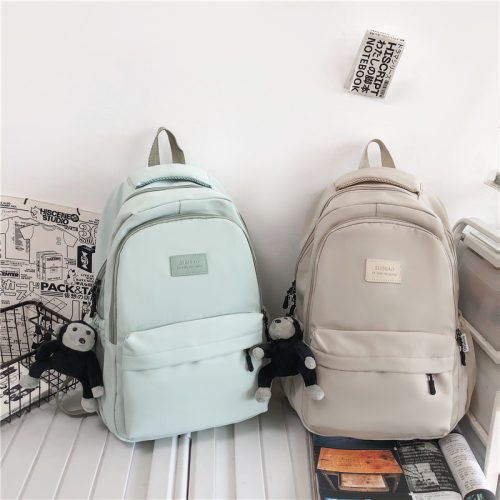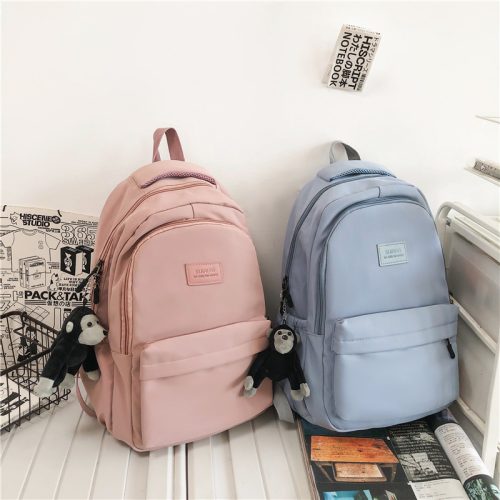Introduction:In the realm of education, every detail matters, including the design of school bags. While we often focus on the functional aspects of bags, such as storage and durability, we might overlook the psychological impact of their design. The colors, shapes, and features of school bags can significantly influence students’ learning experiences and overall well-being. In this article, we will delve into the psychology of school bag design, exploring how these elements play a crucial role in shaping students’ attitudes, emotions, and cognitive processes.
1. Colors that Energize and Calm
Colors are powerful influencers of mood and emotion. Bright and vibrant colors like yellow and orange can evoke feelings of energy and enthusiasm, making them suitable for students who need a motivational boost. On the other hand, calming colors like blue and green can promote a sense of tranquility and focus, aiding students during periods of concentration and study.
2. Shapes and Cognitive Processing
The shapes and contours of school bags can impact cognitive processing. Smooth, flowing lines and rounded shapes are often associated with comfort and approachability. Bags with these design elements might create a welcoming feeling, encouraging students to engage with their studies in a relaxed manner.
3. Ergonomics and Well-being
The ergonomic design of a school bag goes beyond mere comfort; it can significantly affect physical well-being. A well-designed bag with padded straps and proper weight distribution can prevent discomfort, muscle strain, and even long-term back problems. Students who carry ergonomically designed bags are more likely to feel physically at ease, contributing to their overall sense of well-being.
4. Personalization and Self-expression
Personalizing school bags allows students to express their individuality and creativity. Customization options, such as patches, pins, and interchangeable components, enable students to create a bag that reflects their personality and unique interests. This personal connection with their bag can boost self-esteem and contribute to a positive emotional state.
5. Multi-functionality and Adaptability
Bags that offer multiple compartments and versatile storage solutions promote organizational skills and adaptability. Students who can easily access different items in their bags might experience reduced stress and enhanced efficiency, positively impacting their ability to focus on learning.
6. Nostalgia and Emotional Resonance
Design elements that evoke nostalgia or remind students of positive experiences can create an emotional connection to their school bags. This emotional resonance can contribute to a positive attitude towards school and learning, fostering a sense of belonging and engagement.
7. Trendiness and Peer Influence
For many students, being on-trend and having a fashionable bag can influence their self-perception and interactions with peers. Keeping up with current styles might boost students’ confidence and social integration, positively affecting their well-being.
8. Minimalism and Clarity
Minimalist designs with clean lines and uncluttered aesthetics can promote mental clarity and focus. A simple and organized bag can mirror a student’s approach to their studies, encouraging a streamlined thought process and reducing distractions.
9. Eco-conscious Design and Environmental Awareness
Bags designed with eco-consciousness in mind can instill a sense of environmental responsibility in students. Knowing that their bag is made from sustainable materials or supports eco-friendly practices can foster a deeper connection to nature and a commitment to preserving the planet.
10. Longevity and Emotional Attachment
A well-designed, durable bag can create an emotional attachment over time. As students carry their bags through different stages of their educational journey, the bag becomes a symbol of growth and accomplishment, contributing to a positive emotional association with learning.
Conclusion:The psychology of school bag design goes beyond aesthetics; it delves into the intricate ways that colors, shapes, and features can influence students’ learning experiences and emotional well-being. By understanding the psychological impact of these design elements, educators and students alike can make informed choices when selecting school bags. The right design can create a conducive environment for learning, nurture positive emotions, and contribute to the holistic development of students as they embark on their educational journey.


